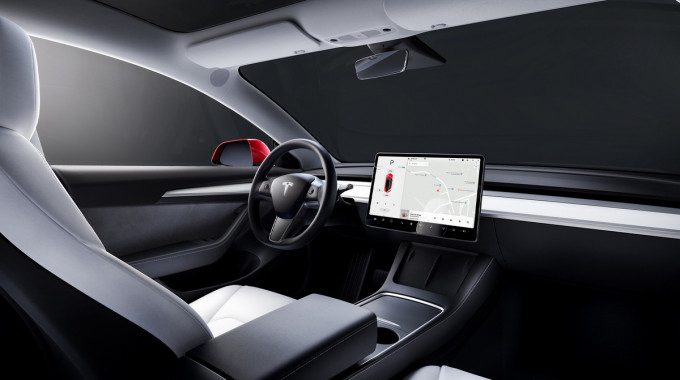In a world increasingly dominated by urbanization and technological advancements, AI-driven electric vehicles (EVs) are at the forefront of a transportation revolution. According to a recent report by Bloomberg Green, the global electric vehicle market is expected to reach over 30 million units by 2024. This surge is largely attributed to the integration of artificial intelligence and autonomous driving technologies, which are set to redefine urban mobility. In this article, we’ll explore how AI-driven EVs are shaping the future of cities, making transportation more efficient, sustainable, and accessible.
The Rise of AI in Electric Vehicles
AI and Autonomous Driving Capabilities
One of the most significant advancements in the electric vehicle industry is the integration of artificial intelligence to enhance autonomous driving capabilities. Companies like Tesla and Waymo are leading the charge, developing sophisticated AI systems that enable cars to navigate complex urban environments with minimal human intervention. By 2024, it’s predicted that a significant portion of EVs will feature Level 4 autonomy, allowing them to operate without human oversight in certain conditions.
- Tesla’s Full Self-Driving (FSD) Beta: With over 300,000 users testing the FSD Beta, Tesla is collecting vast amounts of data to improve their AI systems.
- Waymo’s Robotaxi Service: Operating in cities like Phoenix and San Francisco, Waymo’s autonomous taxis have already provided hundreds of thousands of rides, proving the viability of AI-driven transport.
Enhancing Safety and Efficiency
AI not only boosts the autonomy of vehicles but also significantly enhances safety and efficiency. Advanced driver-assistance systems (ADAS) use AI to monitor road conditions, predict potential hazards, and take proactive measures to avoid accidents. According to the National Highway Traffic Safety Administration (NHTSA), these systems have the potential to reduce traffic accidents by up to 90%.
- Collision Avoidance Systems: AI-powered sensors and cameras detect upcoming obstacles and automatically apply brakes.
- Traffic Management: AI algorithms optimize routes based on real-time traffic data, reducing congestion and improving travel times.
Transforming Urban Mobility
Reducing Traffic Congestion
AI-driven EVs are pivotal in addressing the perennial problem of urban traffic congestion. By utilizing machine learning algorithms, these vehicles can communicate with each other and traffic infrastructure to optimize traffic flow. This is particularly transformative in megacities where traffic congestion significantly impacts productivity and quality of life.
- Smart Traffic Lights: These systems adjust signal timings based on real-time traffic data, facilitating smoother traffic flow.
- Vehicle-to-Everything (V2X) Communication: Enables vehicles to interact with nearby infrastructure and other vehicles to avoid congestion.
Promoting Sustainable Urban Development
The environmental benefits of AI-driven EVs cannot be overstated. As cities strive to reduce their carbon footprints, these vehicles play a crucial role in promoting sustainable urban development. By 2024, it is expected that EVs will account for over 10% of global car sales, thanks to their zero-emission nature and energy-efficient technologies.
- Renewable Energy Integration: AI optimizes charging based on renewable energy availability, reducing reliance on fossil fuels.
- Battery Management Systems: AI ensures efficient energy use and extends battery life, reducing waste.
Practical Tips for Embracing AI-Driven EVs
How to Charge AI-Driven EVs
Charging an AI-driven EV is becoming increasingly convenient with the expansion of global charging infrastructure. Companies like Volkswagen and Hyundai are investing heavily in ultra-fast charging networks to support their AI-enabled fleets.
- Public Charging Stations: Utilize apps like PlugShare to locate nearby charging stations.
- Home Charging Solutions: Install a Level 2 home charger for convenient overnight charging.
Where to Buy and What to Compare
When considering the purchase of an AI-driven EV, it’s crucial to compare different models based on features, range, and price.
- Top Models of 2024: Tesla Model 3, Rivian R1T, and Lucid Air.
- Key Features to Compare: Autonomy level, battery efficiency, and AI capabilities.
Comparing Costs and Benefits
AI-driven EVs may have a higher upfront cost, but the long-term savings and benefits often outweigh the initial investment.
- Cost Savings: Reduced fuel and maintenance costs.
- Environmental Impact: Lower emissions contribute to cleaner air and reduced environmental impact.
Conclusion: The Future of Urban Mobility
As we look toward the future, AI-driven EVs are proving to be game-changers in urban mobility. They offer a glimpse into a world where transportation is not only efficient and safe but also environmentally sustainable. The integration of AI and autonomous technologies is setting the stage for smarter cities, where mobility is seamlessly integrated into the fabric of urban life.
In conclusion, the rise of AI-driven EVs is more than just a technological trend; it’s a movement toward a more sustainable, efficient, and connected future. As these vehicles become more prevalent, they will continue to shape the way we move and live in our cities. Are you ready to embrace this exciting new era of transportation? Share your thoughts and experiences in the comments below!
The future of urban mobility is bright, with AI-driven EVs leading the charge toward a cleaner and smarter world. Stay informed and stay ahead by exploring the latest developments in this revolutionary field.

